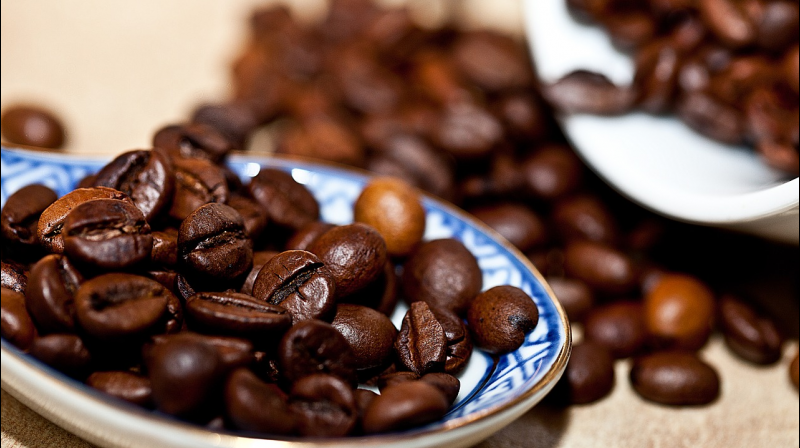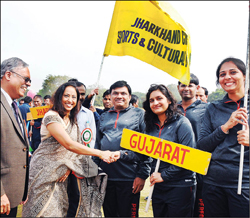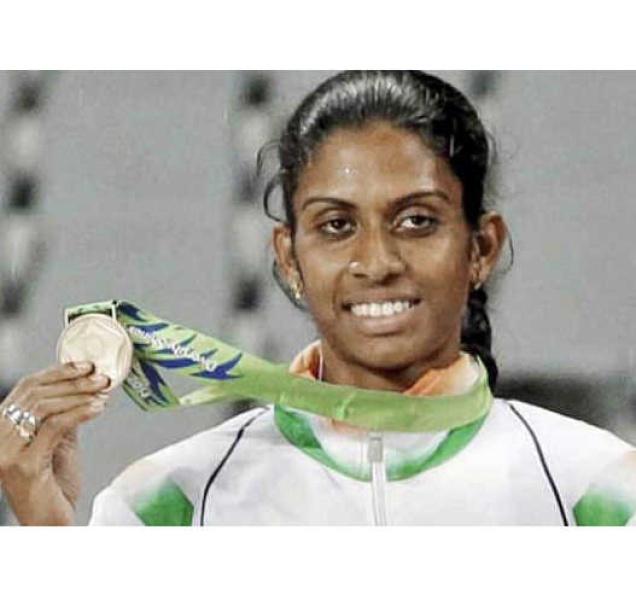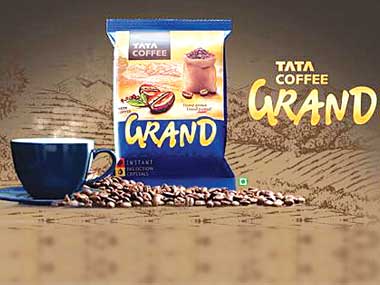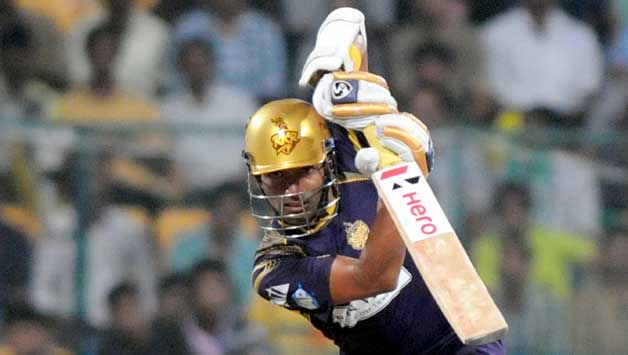by Dr Amrit Patel
Favourable climatic factors along with a fairly dry spell of 70 to 90 days make Kerala an ideal place to grow coffee. About 76,000 holdings of average size of 1.1 hectare symbolise Kerala a small-holder coffee state but provides livelihood to one lakh families.
Since 1976, Kerala Forest Development Corporation has been managing all coffee estates. In 1990-91, Kerala had 84,016 hectare with coffee production of 21,884 tonne accounting for 31.06% and 12.89% share respectively in India. After two decades, during 2011-12, the area declined significantly to 20.53%, whereas the production substantially increased 21.65% of that in India.
Thus, yield which was very low at 260.47 kg/ha in 1990-91 as compared to 627.42 kg/ha of national average increased substantially to 809.52 kg/ha as compared to national average of 763.73 kg/ha in 2011-12. However, productivity of the coffee in terms of bearing area in Kerala (705 kg/ha) is lower than the national average [826 kg/ha].
Kerala accounts for 20.70% of total coffee area in India. Robusta variety having average lifespan of 60-80 years and requiring least pesticides covers 95% of planted area. For 2014-15, final estimates of total production of coffee in Kerala indicate 67,700 tonne [Arabica 2055 tonne and Robusta 65,465 tonne]. Robusta and Arabica account for 96.70% and 3.30% coffee production respectively in Kerala as against 70.03% and 29.97% respectively in India. Robusta fetches lower prices in domestic and international markets and its brewing value is comparatively lower than Arabica. Though irrigation can increase yield of Robusta by 60% to 70% small coffee growers do not provide irrigation due to high costs of sprinkler/drip irrigation system.
Planters prefer multi-cropping pattern [coffee, tea and spices] to optimally utilise resources and insulate plantation from vagaries of nature and market. A special feature of coffee plantation in Kerala is that coffee plants are grown under the shade of tall shady trees. Conducive climate, hills, greenery, flora and fauna enhance Malabar region’s attraction for tourists. Monsooned coffee is a special delicacy of the region. A less known fact about Malabar coffee is that it was discovered by accident. Wayanad region covers more than 33% of district’s coffee area and coffee is grown as a single crop as also with pepper. About 90% holdings in Wayanad region are below two hectare and are mainly owner-operated with least engagement of casual wage labour.
Marketing
With the economic liberalisation in 1991, the role of the Coffee Board has been diluted and the coffee pooling system was abrogated. In 1993, the Internal Sales Quota entitled coffee growers to sell 30% of their produce in the country. Subsequently, the amended Free Sales Quota in 1994 permitted growers to sell between 70% and 100% of their coffee either domestically or internationally. And finally, amendment in 1996 allowed them the freedom to sell their produce wherever they wished. This led to the emergence of intermediaries in the trade and in absence of regulated and development authority to coordinate and provide directions for coffee marketing, the middlemen collect coffee directly from farmers at reduced price and sell to wholesalers/exporters at high price. To tide over financial difficulties, farmers are often tempted to sell coffee in advance of the harvesting season which fetches low prices.
After the withdrawal of the Coffee Board, the vacuum created has been to some extent replaced by private sector initiatives like Indian Coffee Trade Association which began auctioning on a periodic basis. There are also efforts towards online trading which is being conducted through portal commodityindia.com. However, fact is that less than 10% of coffee is sold through auctions as most small growers prefer to sell unprocessed crop directly to exporters or roasters through agents.
With the rising coffee consumers in Kerala the demand for domestic consumption is expected to rise. In this context, when international coffee chains are already planning their aggressive strategic entry in Kerala, domestic coffee chains are also expanding their businesses to capitalise the market opportunities. The latest entrants include Hilite Group of Kozhikode, Beans and Flavours, a small coffee blender from Idukki district, and Tonico. The Hilite Group is reportedly planning to establish a chain of 100 coffee shops. The domestic coffee chains have the potential to succeed and produce some global brands on account of factors like ambience, product quality and services.
However, in the coffee value chain farmers capture not more than 20% of the end value. Other intermediaries and traders (local and international) and roasters gain substantially. It is estimated that roasters alone retain about 30% of the value. Brands also play an important role in the value chain. Since it is a buyers’ market, buyers collectively put in serious efforts to reduce the value for the primary producers. Mechanisms like certification are aimed at allowing fair margins at the producer level but in reality they become counterproductive.
Government’s Support
Government has initiated measures to help farmers raise coffee productivity, quality and small farms’ viability that include, among others, [i] restructuring bank loans and providing interest relief to coffee growers (a subsidy of 5% to small growers and 3% to large growers on working capital) [ii] rainfall insurance as a risk management support for coffee growers in collaboration with Agricultural Insurance Corporation [iii] in June 2010, the coffee debt relief package was implemented for the debt ridden small coffee growers with a total financial implication of Rs 241.33 crore [iv] Since April, 2003, Government of India has set up a Price Stabilization Fund aimed at providing financial relief to the growers when the prices of the commodities covered fall below a specified level [v] Investment in coffee gardens are subsidised ranging from 20% to 40% depending on the size of the holdings [vi] Coffee Board facilitates support for establishment of processing units, formation of growers’ collectives, among others.
Need for Focussed Attention
Action Research:
here is immediate need to mount Action Research Project to study comprehensively and understand following facts and suggest changes in policy and programme in consultation and dialogue with farmers.
[A] The reasons for coffee growers’ inability to [i] replant Arabica coffee being superior in many respects to Robusta [ii] irrigate Robusta coffee to increase yield by 60% to 70% when subsidy and bank credit is available to augment water resources [iii] upgrade quality of coffee when the Coffee Board provides support for establishing processing units, formation of growers’ collectives, etc. [iv] adopt scientific plant protection measures to control stem borer infestation [v] access services of technical staff for adopting scientific practices evolved by the regional research station to increase productivity, quality and profitability of coffee.
[B] Slow growth and development of coffee economy and impact on coffee growers’ financial status despite significant support is extended by the government and the Coffee Board in various forms.
[C] Farmers not benefitting despite the fact that the prices progressively increasing during 2004-05 to 2011-12 [i] in the international markets from 69.72 US cent/lb to 202.16 for coffee and for future trading in New York at 90.38 to 244.26 for Arabica and 34.09 to 97.25 for Robusta and [ii] in auction markets in India from Rs 72.16/kg to Rs 240.61 for Arabica and Rs 34.94 to Rs 113.99.
Enabling Measures:
Following enabling measures are necessary for enhancing coffee productivity, quality, and financial viability of small farms
.Product diversification, mechanisation of specific farm operations, professional management and technical inputs, post-harvest processing, supplementary income earning opportunities to enable small growers to remain in production chain with cost- competitiveness.
.Enhancing domestic consumption to help in price stability.
.Labour and social security reforms to enhance productivity and cost-competitiveness
.To crystallise in unambiguous terms the role of the government, International Coffee Organisation, Coffee Board, trade exchanges and traders to ensure reasonable returns to small growers and their effective participation in the markets.
.Vertical integration of small producers on lines of Amul Dairy and Gujarat Milk Marketing Federation in Gujarat to enhance value for the primary producers.
.Optimum utilisation of services currently offered by the Coffee Board viz. research, extension, development, quality ‘upgradation,’ economic & market intelligence, internal & external promotion of coffee marketing and labour welfare to create visible impact on coffee farmers’ economy.
.Efficient use of subsidy schemes for replantation, water augmentation, quality ‘upgradation’ and farm mechanisation should motivate/encourage growers to replant coffee with Arabica variety, provide irrigation to Robusta coffee, reduce labour-cost and improve productivity and quality of coffee.
.Creating awareness among farmers and facilitating them to access information through media and ICT about the online trading platforms and futures markets that should help them to take informed decision for their benefits.
(The author is former deputy general manager, Bank of Baroda, Gujarat. He can be contacted at dramritpatel@yahoo.com)
source: http://www.fnbnews.com / Food & Beverage News / Home> Top News / by Dr. Amrit Patel / January 16th, 2016
